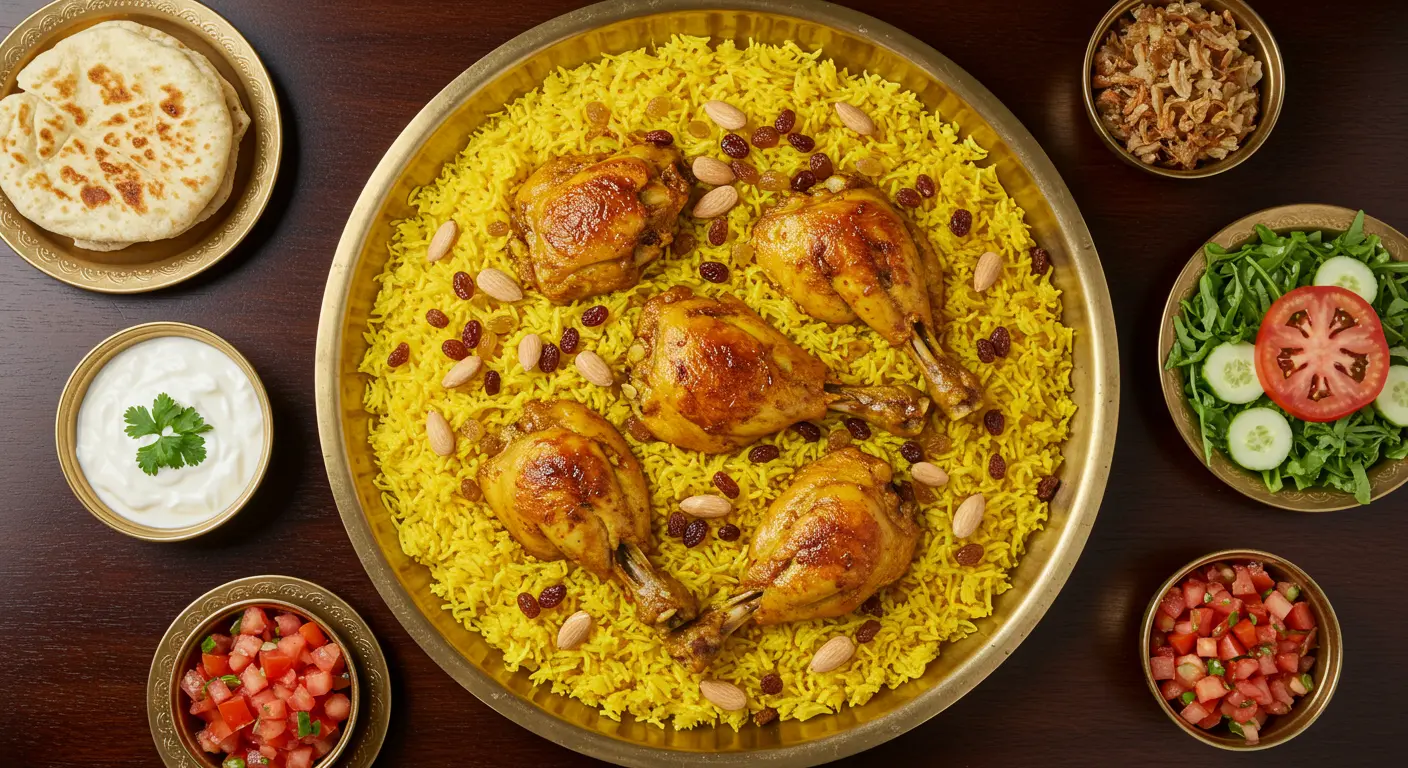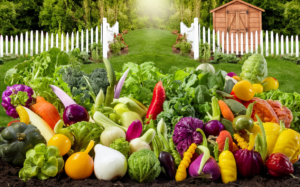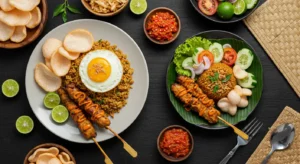Table of Contents
A Beginner’s Guide to the Unforgettable Flavors of Saudi Arabian Food
The scent of warm, aromatic basmati rice mingles with the deep, earthy notes of cardamom and the gentle heat of black lime. A massive platter arrives, piled high with tender, spiced lamb that falls off the bone, crowned with golden almonds and plump raisins. This isn’t just a meal; it’s the heart of Saudi hospitality. If you think you know Middle Eastern cuisine, Saudi Arabian food is a vibrant, distinct chapter waiting to be explored.
For the uninitiated, the world of Saudi cuisine can seem vast and mysterious. Where do you even begin? What are the dishes you simply can’t miss? This guide is your starting point. We’re going to move beyond the restaurant menu and dive into the stories, spices, and shared platters that define this incredible food culture. By the end, you’ll not only have a list of dishes to try but also an understanding of the warmth and tradition woven into every bite. So, let’s pull up a cushion, get comfortable, and explore the feast.
More Than Just Food: The Heart of Saudi Hospitality
To truly get Saudi cuisine, you first have to understand its context. In a land historically shaped by a harsh desert climate and the traditions of trade along ancient incense routes, food became more than sustenance—it was a symbol of generosity and community. The concept of ‘Izba’, or hospitality, is sacred.
Imagine a nomadic Bedouin traveler arriving at a tent. Offering the best food available, even if it meant the host went without, was a non-negotiable point of honor. This deep-rooted value echoes today. Meals are often shared from a central platter, a practice that fosters connection and family bonds. It’s a cuisine designed to be experienced together, with hands, conversation, and a genuine sense of welcome. As highlighted by the Saudi Arabian Tourism Authority, this generous spirit is central to the cultural experience for any visitor.
The Flavor Foundation: Key Spices & Ingredients
So, what gives Saudi food its distinctive character? It’s a masterful blend of spices that are warm, aromatic, and never overwhelmingly hot.
- Cardamom (Hail): The undisputed king of Saudi spices. You’ll find its sweet, camphor-like aroma in everything from coffee to rice dishes and desserts.
- Saffron (Za’faran): This precious spice provides a beautiful golden hue and a delicate, honey-like flavor to rice dishes like Kabsa.
- Black Lime (Loomi): A secret weapon! These dried limes are pierced and cooked whole into stews, imparting a tangy, slightly smoky flavor that’s utterly unique.
- Dried Thyme (Za’atar): A blend of thyme, sumac, and sesame seeds, often mixed with olive oil as a dip for bread at breakfast.
- Dates (Tamr): More than just a sweet treat, dates are a national symbol. They are the first thing offered to a guest alongside Arabic coffee, a gesture of peace and welcome.
Your Saudi Food Bucket List: 5 Dishes You Have to Try
Ready to explore? Here are the essential dishes that form the cornerstone of the Saudi dining experience.
1. Kabsa (المكبوس): The National Dish
If you only try one thing, make it Kabsa. This is the iconic Saudi dish, a glorious one-pot wonder of rice and meat. Long-grain basmati rice is slow-cooked in a rich, spiced broth (often with tomato, cardamom, saffron, and black lime) until it’s incredibly fragrant. It’s then topped with either chicken, lamb, or goat that has been boiled or sometimes fried. The whole platter is garnished with toasted nuts and raisins. Every family has their own recipe, and it’s the centerpiece of celebrations.
2. Jareesh (الجريش): A Comfort Food Classic
Think of Jareesh as the ultimate Saudi comfort food. It’s a porridge made from crushed wheat berries that are simmered for hours with yogurt, milk, and tender pieces of meat (usually chicken or lamb). The result is a creamy, tangy, and savory dish with a texture similar to coarse oatmeal. It’s a testament to the cuisine’s humble, nourishing roots and is especially popular during the holy month of Ramadan.
3. Mutabbaq (المطبق): The “Folded” Street Food Delight
Walking through a Saudi souk (market), you’ll inevitably be tempted by the smell of Mutabbaq. The name means “folded” in Arabic, and it’s a thin, flaky pastry dough stuffed with a variety of fillings. The most common is a spiced minced meat mixture with onions and herbs, but sweet versions with bananas and Nutella are also hugely popular. It’s pan-fried to a perfect golden brown—a handheld parcel of pure joy.
4. Saleeg (السليق): The Creamy White Stew
Hailing from the Hijaz region (around Jeddah and Mecca), Saleeg is the creamy, elegant cousin of Jareesh. It’s a white rice porridge where short-grain rice is cooked in a meat and milk broth until it reaches a risotto-like consistency. Topped with tender boiled chicken and a drizzle of a spiced butter sauce called ‘Samna’, it’s a delicate, soothing dish that showcases the region’s culinary diversity.
5. Kunafa (كنافة): The Unforgettable Dessert
No Saudi feast is complete without a sweet ending, and Kunafa is a showstopper. This decadent dessert features a layer of mild, stretchy cheese (like Nabulsi cheese) sandwiched between layers of shredded phyllo pastry or semolina dough, soaked in a sweet, rosewater-infused syrup. It’s baked until the cheese is melted and the outside is crisp and golden. The combination of gooey, salty cheese and floral syrup is a revelation.
Dining Like a Local: A Quick Etiquette Guide
Feeling a little intimidated? Don’t be. Saudis are incredibly welcoming to guests exploring their culture. But knowing a few simple customs will make the experience even better.
- The Right Hand Rule: Traditionally, food is eaten with the right hand. The left hand is considered unclean. It’s polite to use your right hand for serving yourself and eating, even if you’re using utensils.
- The Shared Platter: Don’t be shy! Eat from the part of the platter directly in front of you. It’s a sign of respect not to reach across to the other side.
- The Language of Coffee: Arabic coffee (Gahwa) is a ritual. It’s served in a small cup without handles. To indicate you’ve had enough, simply give the cup a slight shake when the server comes by. They’ll know you’re finished.
Bringing the Flavors Home
Maybe this read has made you hungry. The good news is, you don’t have to travel far to start experimenting. Many of the core spices are now available in international aisles of large supermarkets or specialty stores online. Why not try making a simple version of Kabsa at home? The process of toasting the spices alone will fill your kitchen with an incredible aroma. Start with a chicken-based recipe—it’s a bit more approachable than lamb. The key is to take your time and let the rice absorb all those beautiful flavors.
It’s about the experience, not just perfection. Even if your first attempt isn’t exactly like a Saudi grandmother’s, the act of cooking and sharing it is a nod to the very spirit of the cuisine.
Your Saudi Food Journey Starts Now
The world of Saudi Arabian food is a rich tapestry woven from history, geography, and an unwavering spirit of generosity. It’s a cuisine that invites you to slow down, connect with those around you, and savor layers of complex, comforting flavor. From the grandeur of a Kabsa platter to the simple joy of a date with coffee, every dish tells a story.
Your adventure doesn’t have to wait for a plane ticket. Look for a well-reviewed Middle Eastern or Halal restaurant in your city and be bold. Ask for their recommendations. Order a dish you can’t pronounce. Or, better yet, grab some cardamom and saffron and invite friends over for a homemade Saudi-inspired meal. You might just discover your new favorite food tradition.
Frequently Asked Questions (FAQs)
Q: Is Saudi Arabian food very spicy?
A: Generally, no. Saudi cuisine prioritizes warm, aromatic spices like cardamom, cinnamon, and saffron over intense heat. The flavor profile is more about depth and fragrance than spiciness, though some condiments can add a kick if you want it.
Q: What is a good vegetarian dish to try in Saudi cuisine?
A: While many classic dishes feature meat, there are delicious options! Foul Medames is a popular fava bean stew often eaten for breakfast. Mutabbaq can be made with a vegetable filling, and Fattoush or Tabbouleh are fresh, herbaceous salads found on most tables. Always ask, as hospitality is key, and many places will accommodate.
Q: How is Saudi food different from other Middle Eastern cuisines like Lebanese or Egyptian?
A: Great question! There’s overlap, but each has a unique identity. Lebanese cuisine is heavily influenced by the Mediterranean, with more fresh vegetables, olive oil, and seafood. Egyptian food relies heavily on beans, lentils, and garlic. Saudi cuisine is distinct for its generous use of aromatic rice and meat dishes, slow-cooked stews, and the prominent flavors of cardamom and black lime, reflecting its Bedouin and Arabian Peninsula heritage.
Q: Where can I learn more about authentic Saudi recipes?
A: For an authentic deep dive, a fantastic resource is the Saudi Culinary Arts Commission. They are dedicated to preserving and promoting the kingdom’s food heritage. A great place to see this in action is their official page on the Saudi Arabia Ministry of Culture website, which offers a wonderful overview of the culinary tradition: Explore Saudi Cuisine on the Ministry of Culture Website




